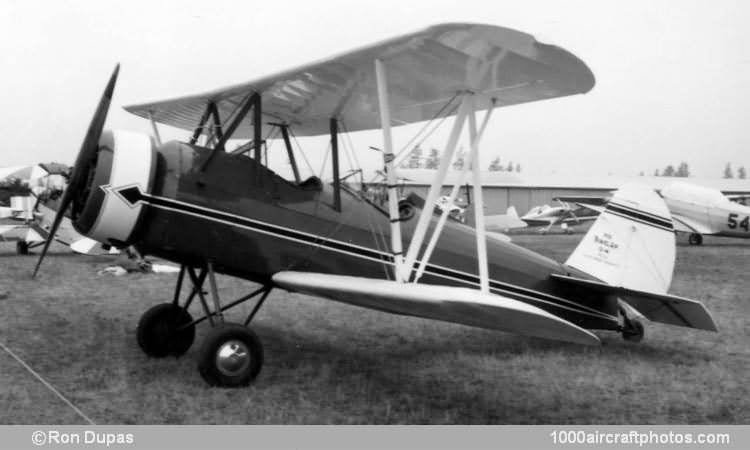From the NTSB Accident Data Base:
Accident occurred Sunday, July 26, 1998 at Woodland, Washington, USA.
Aircraft: Curtiss-Wright CW-12K, registration: N11715, manufactured:
1931.
Injuries: 1 Uninjured.
The pilot of the antique biplane stated that he preferred to land on grass when possible, so he elected to land on the 800 ft (244 m) grass overrun area of the 1,965 ft (599 m) runway. From the air, the freshly mowed overrun looked acceptable, with the 8-9 ft (ca 2.5 m) high stand of scotch bloom showing as a dark green from the air and appearing to be grass. He slipped to a landing, touched down straight and was tracking near the middle of the mowed area when his right wing tip caught in the scotch bloom. The vegetation pulled the aircraft off the right side of the runway, and the lower left wing impacted the ground, causing substantial damage.
According to FAA inspectors, the first signatures of impact were 62 ft (19 m) from the near end of the runway. The airplane came to a stop 247 ft (75 m) from the near end of the runway. The width of the mowed area of the runway was 49.5 ft (15 m), at the time the FAA inspector checked it. The pilot stated that the mowed overrunof 800 ft (244 m) was mowed 25 ft (7.62 m) wide up to the edge of the 8-9 ft (ca 2.5 m) high scrub brush at the time of the accident, and that his airplane had a 28 ft (8.53 m) wing span.
The National Transportation Safety Board determines the probable cause(s) of this accident as follows:
The pilot in command misjudged clearance from high vegetation when he landed. Factors include inadequate mowing of high vegetation by airport personnel, providing insufficient clearance for the wingspan of landing airplanes.
Read the type remarks on page 126.
